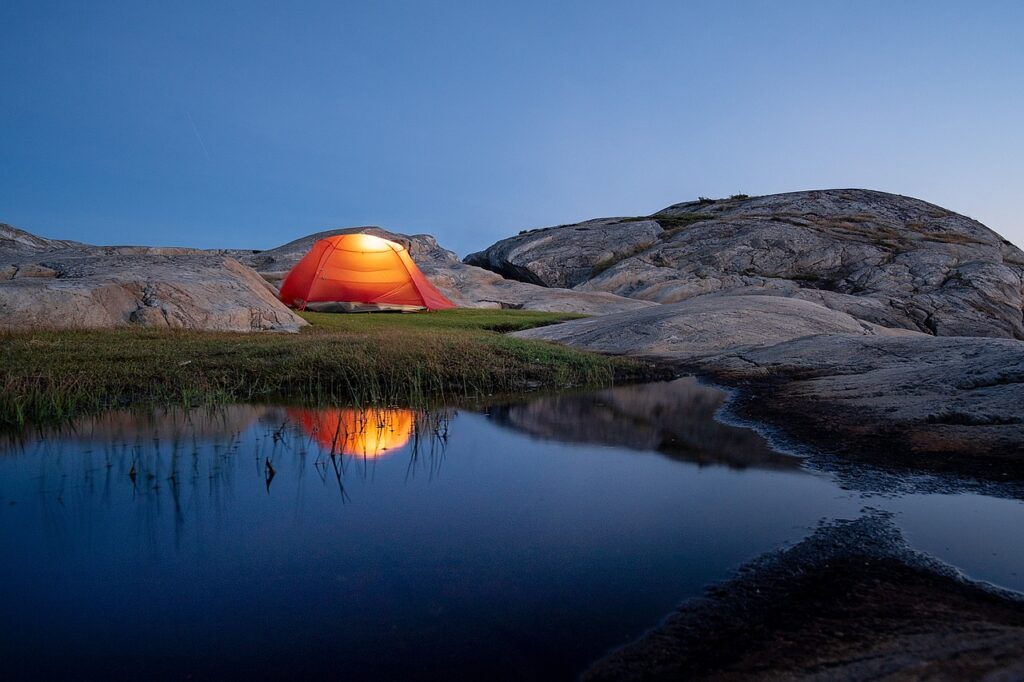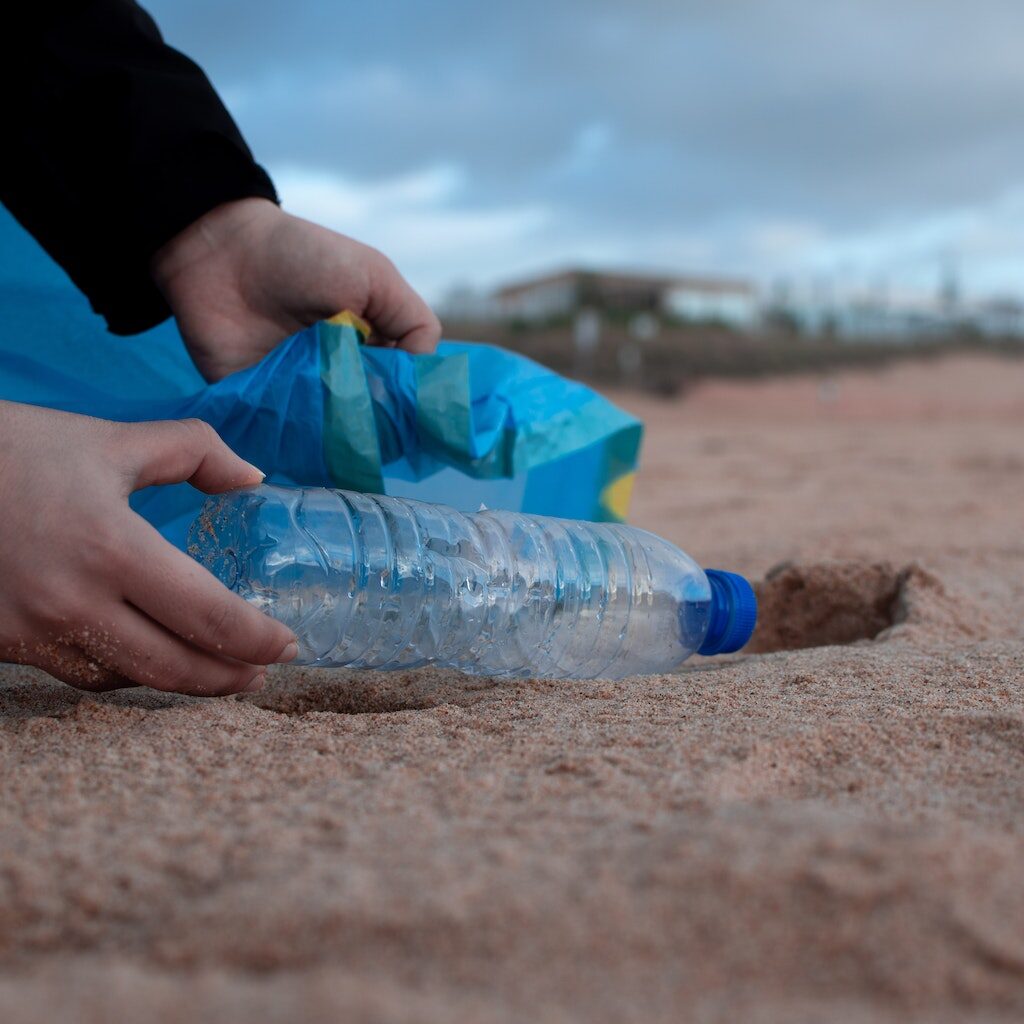10 ways to travel Europe more eco-friendly
Have you ever wondered about the most efficient and green ways to travel all over Europe? We got you covered.

Sustainable travel choices affect all aspects of our lives, including our car choice, our recycling habits, our energy consumption, and our accommodations.
Equally important, is to evaluate the effect of our decisions when considering going on holiday, however, we understand that it can be complex to find the right harmony between fulfilling our wanderlust and being eco-friendly.
According to a survey reported by Forbes, 77% of individuals interviewed want to learn how to include more sustainable choices in their everyday lives, this includes travelling.
Furthermore, a study conducted by Booking.com explained how worldwide 83% of tourists believe that sustainable travel is essential, and 49% think that there are not enough green travel options available or either does not know how to find these options.
A common misconception is that eco-friendly holidays are only about reducing our impact on the environment but eco-travel is also about supporting communities and making sure that their future is safe too.
It is critical that we don’t damage or pollute the destinations that we dream to explore and luckily we don’t have to! Having said that, here there are 10 ways to help you to choose a holiday more aligned with sustainability – it is up to us to decide what makes a holiday.
1) Experience a flyless holiday

Flying isn’t the only way of travelling, you would be surprised at how many places you can reach within a 5 hours train ride. That’s exactly what the website ‘‘chrono train.com’’ shows, check it out to see how far you can go from your location, unfortunately, this service is available only in Europe.
For instance, Eurostar is a train service within Europe that connects its different regions also by train connection. Eurostar trains are 100% electric, and in the Netherlands, wind power is responsible for 100% of its trains’ functioning. Eurostar has even made a commitment to be fully operating off renewable energy in France, UK, and Belgium by 2030. These are just a few initiatives that Eurostar has implemented to provide vacationers a chance to explore the great outdoors and make a minimal impact on its environment.
2) Stay in a green hotel

Eco-sustainable accommodations in Europe are a great way to travel and explore the continent in an environmentally friendly manner.
By staying at eco-friendly lodgings, you can reduce your carbon footprint while still enjoying the comforts of your home. Eco-lodgings usually feature energy-efficient appliances, organic bedding, and other sustainable practices such as composting and water conservation. Staying at these accommodations also helps support local businesses and communities that are committed to sustainability.
A great website to find green accommodations is Green Pearls, on the platform, it’s possible to find an eco-friendly place to sleep all over the world, from luxury resorts to modest BnBs.
3) Airline research

Have you placed your jet-setting dreams on hold ever since considering the impact on the planet? Perhaps you do not have to. With a little research, you can make your next big trip contribute to an airline’s initiative for greener aviation. There are several ways you can make a difference the next time you book a flight!
If you are interested in casting your holiday search wide Skyscanner has several tools that fulfill any vagabond’s dreams. Skyscanner highlights greener choices and tells you the percentage of carbon emissions each flight intakes compared to its competitors. From there, you can choose between the cheapest, fastest, and most direct flights to your chosen destination.
If you are curious about eco-friendly airports and alternative airlines, check out Alternative Airlines. With over 3,500 reviews in the past year and a rating of 4.5 stars, this cutting-edge website puts travel and sustainable practices back on the map.
4) Eat local organic products

Choosing to consume organic and locally grown food has been increasingly favored in recent years, and for valid reasons. There are several advantages to selecting organic and local food over conventionally grown and transported food. Below are some reasons why opting for organic and local food is a wise decision:
- Better for your well-being: Organic food is cultivated without synthetic fertilizers and pesticides that may be detrimental to human health and the environment. Additionally, local food is fresher and has not been transported over long distances, allowing it to retain more nutrients and flavor.
- Supports local farmers: When you choose local food, you help support small-scale farmers, and you keep money within the local economy. This also aids in the preservation of farmland and biodiversity in the local ecosystem.
- Reduces environmental impact: Selecting local food implies that it hasn’t had to travel long distances, thereby reducing the carbon footprint related to transportation. Organic farming techniques also support soil health and biodiversity, which can help mitigate climate change.
- Tastes better: Food grown locally is usually harvested at peak ripeness, resulting in more flavor and nutrition. Organic food is also free of synthetic additives and preservatives that can detract from its taste.
Overall, consuming organic and local food has several benefits for both personal health and the environment. By selecting food grown without synthetic fertilizers and supporting local farmers, you can contribute to a healthier and more sustainable food system.
5) Research the local environment before the trip

Discovering what the local environment is like before visiting is important for the environment because it allows us to understand the impact of our visit.
By researching the area’s ecosystem and culture, we can make informed decisions that minimize our environmental impact. For example, we can choose eco-friendly accommodations, support local businesses, and avoid activities that harm the environment. Being aware of the local environment also helps us appreciate its beauty and significance, which can inspire us to protect it for future generations.
6) Go to less visited destinations

Travelling to less visited destinations in Europe can have a significant positive impact on the environment and the local economy. As tourism continues to grow, there is a risk of overcrowding in popular destinations, which can lead to negative impacts such as environmental degradation, strained resources, and cultural erosion.
By visiting less visited destinations, tourists can help to alleviate these pressures and support smaller communities. One of the main advantages of travelling to less visited destinations in Europe is that it can help to reduce the carbon footprint of tourism. Popular destinations often have a higher number of flights and accommodation options, resulting in a higher carbon footprint.
However, less visited destinations often have fewer flights and lower demand for accommodation, resulting in a lower carbon footprint.
In addition to environmental benefits, travelling to less visited destinations can also have a positive impact on the local economy. When tourists visit smaller communities, they often spend money on locally produced goods and services, which helps to support the local economy. This can help to create jobs and support small businesses, which can help to reduce poverty and inequality in the region.
Moreover, by visiting less visited destinations, tourists can experience a more authentic and unique cultural experience.
Popular destinations often become heavily commercialized, leading to the loss of traditional culture and customs. By visiting less visited destinations, tourists can contribute to the preservation of local culture and heritage.
In conclusion, travelling to less visited destinations in Europe is good for both the environment and the local economy. It helps to reduce the carbon footprint of tourism and supports smaller communities. By choosing to visit less visited destinations, tourists can have a positive impact on the environment, the economy, and local culture, while also having a unique and authentic travel experience.
7) Look into hybrid powered cruises

When it comes to free carbon emission ways of travelling, cruising generally appears to be the worst.
However, because of global green initiatives, and the rising social awareness towards reducing our carbon footprint, new ships have been made and are being adapted which consume less energy than ever before.
This problem brought an opportunity for development for the touristic cruise industry. Hurtigruten is a Norwegian operator which takes advantage of hybrid electric-powered ships, to conduct expeditions in the beautiful Norwegian fiords.
The ship in the picture above is the MS Roald Amundsen. The vessel is named for the Norwegian explorer who was the first person to navigate the Northwest Passage by boat and the first person to cross Antarctica and reach the South Pole.
The hybrid operating system uses large banks of batteries to supplement the power of the main engines, cutting CO2 emissions by 20 percent and allowing for limited periods of running on battery power alone with zero emissions. Hurtigruten also has sustainability policies in place, including a ban on single-use plastics and a goal of being totally emission-free within 20 years.
Through these efforts, Hurtigruten and many others are paving the way for an environmentally friendly future for expedition cruises.
8) Consider camping

Go down the road less traveled and explore the great outdoors. This type of travel is recommended to the outdoorsy and adventurous ones, especially when going into unknown places, remember safety first. The full immersion in nature gives the trip an unconventional point of view of the country visited.
Of course, the first thing to check when organizing this kind of trip is to search for venues that allow camping. Once the spot is been found it’s critical to make an itinerary and to have all the equipment necessary for it.
The best part? This type of trip is completely CO2 emissions-free.
9) Volunteer to help in animal sanctuaries

Volunteering at animal sanctuaries can be an amazing experience for both animal lovers and travellers looking for a unique trip in Europe. There are many sanctuaries across the UK and Europe that offer the opportunity to help care for rescued animals.
Volunteers can typically participate for a minimum of one week up to a maximum of 52 weeks, and most experiences provide food and accommodation. Volunteers not only have the chance to care for animals, but they may also learn about animal welfare and conservation, and meet like-minded individuals from around the world.
To find animal sanctuary volunteering opportunities in Europe, one useful resource is Volunteer World. This website connects volunteers with ethical and sustainable projects worldwide, including animal sanctuaries. Volunteers can search for opportunities based on location, duration, and project type.
Volunteering at animal sanctuaries not only provides a meaningful travel experience, but it also supports the important work of animal sanctuaries in providing care and shelter for rescued animals. It is a chance to make a positive impact on animal welfare and conservation efforts while also creating lasting memories and connections with animals and fellow volunteers.
10) Just live more eco-friendly

Living an eco-friendly lifestyle has never been more important. By adopting a green mindset, we can make a positive impact when travelling.
By choosing sustainable modes of transport like cycling, walking, or taking public transport, we can reduce our carbon footprint. Supporting local businesses and opting for eco-friendly accommodations, such as eco-lodges and hostels, can also benefit local economies while minimizing the impact on the environment.
By being mindful of our impact and avoiding activities that harm the environment, we can preserve natural habitats and wildlife. This ensures that the places we visit remain beautiful and vibrant for generations to come.
By living more eco-friendly, we can enjoy the benefits of travel while minimizing our impact on the planet. It’s important to remember that small changes can make a big difference. Adopting a green mindset can help us protect the environment and ensure that future generations can enjoy the beauty of our planet.
Conclusion
In conclusion, travelling can be a great way to explore the world while also being mindful of our impact on the environment. To summarize our 10 ways to travel Europe more eco-friendly are:
- Experience a flyless holiday;
- Stay in a green hotel;
- Airline research;
- Eat local organic products;
- Research the local environment before the trip;
- Go to less visited destinations;
- Look into hybrid powered cruises;
- Consider camping;
- Volunteer to help in animal sanctuaries;
- Just live more eco-friendly;
By taking these steps we can ensure that our travels are both, having fun and being more sustainable!
